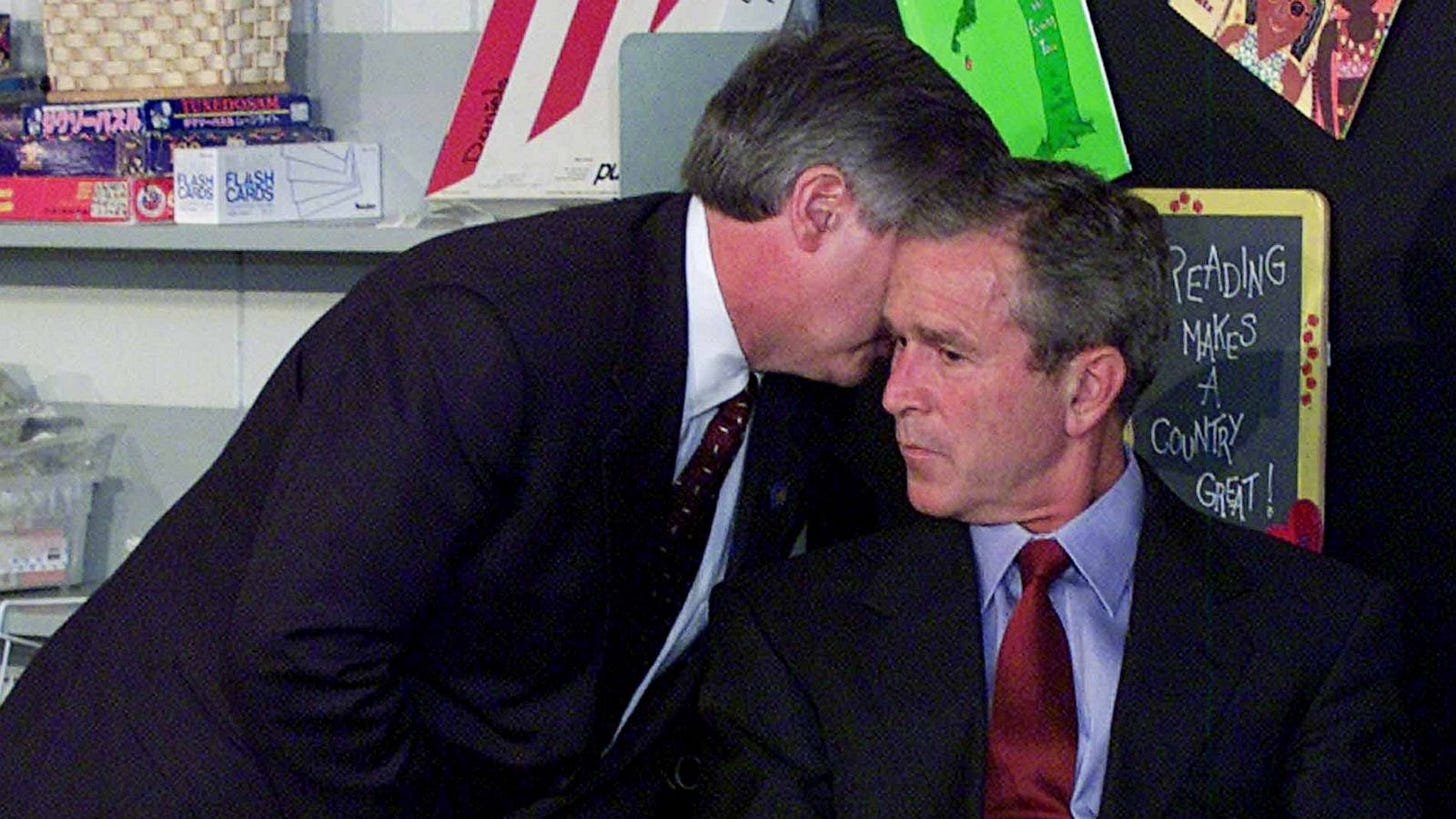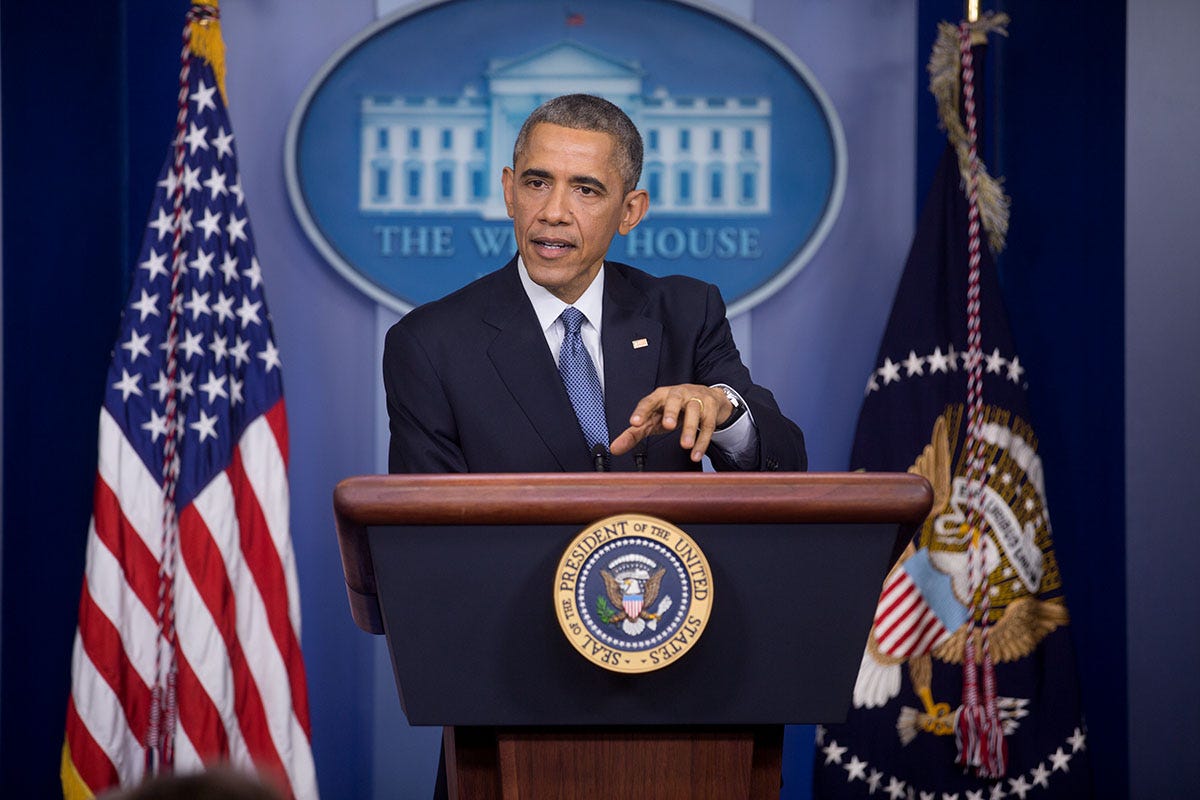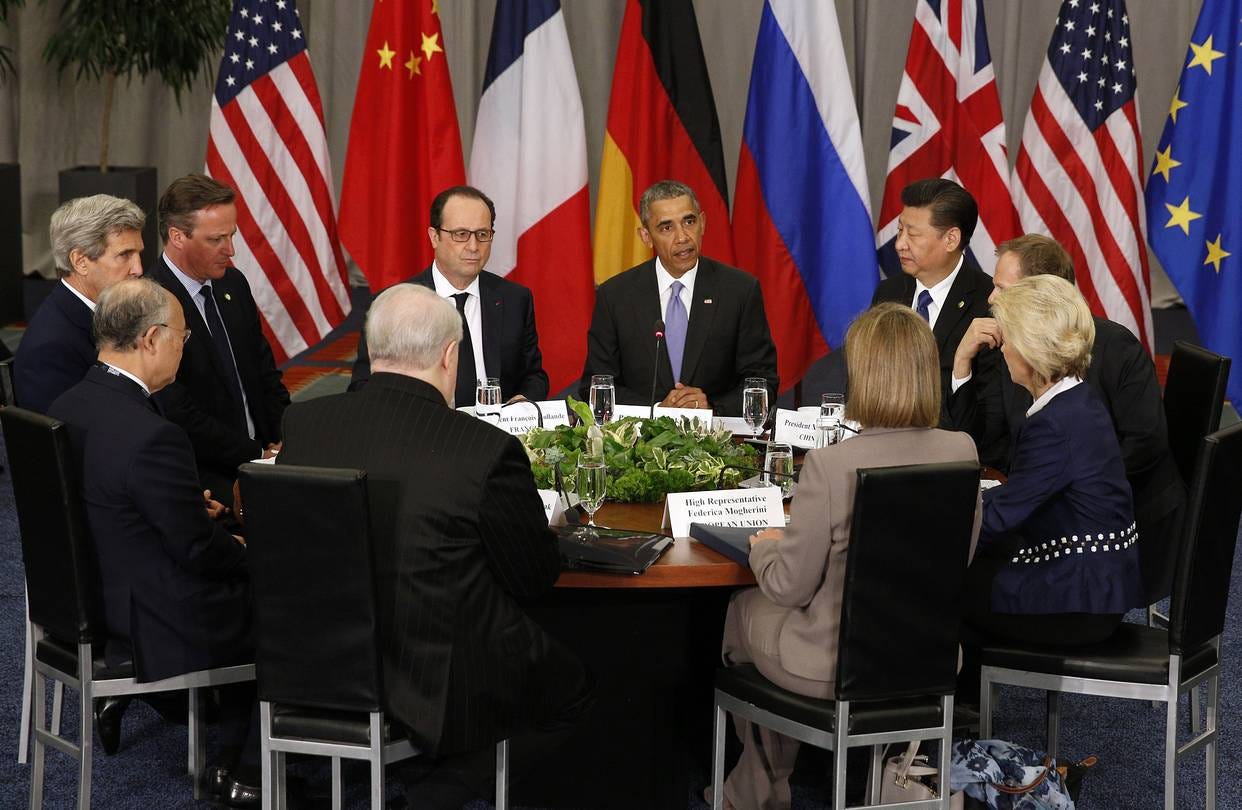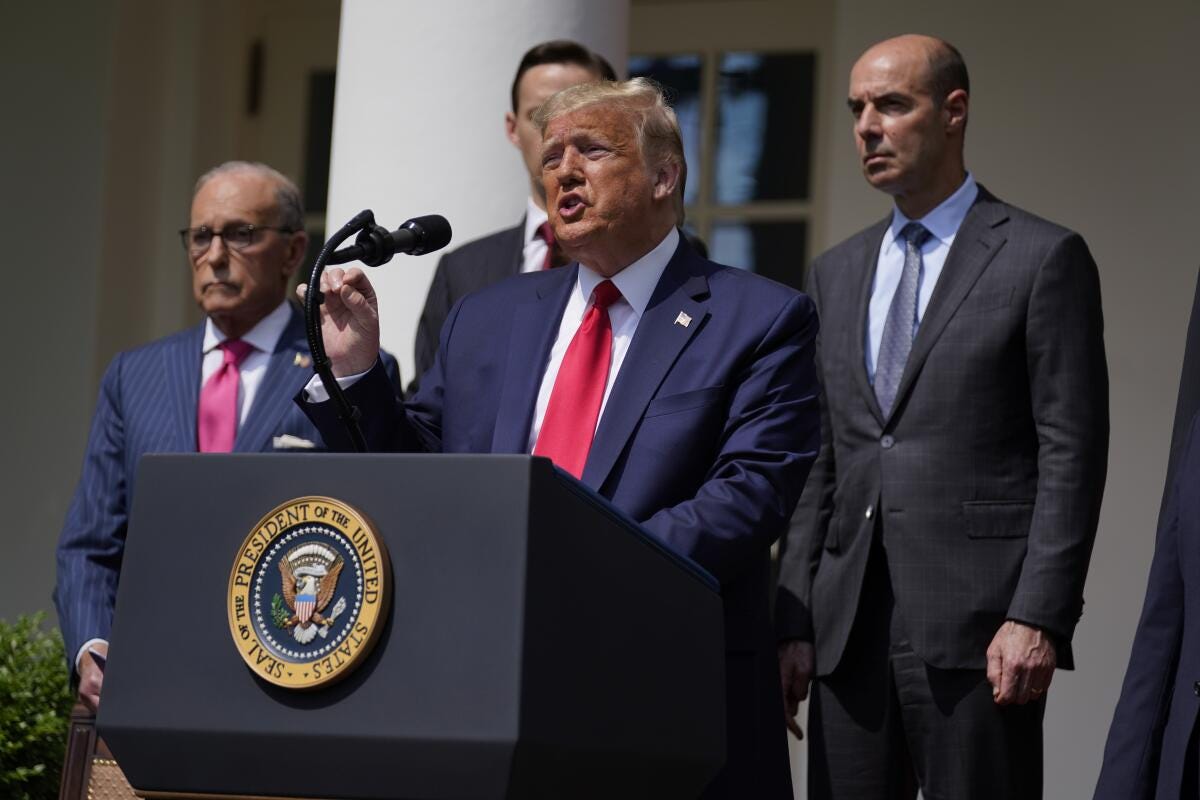What They Don’t Want You to See
Every president promises openness. Here’s what they actually deliver.
Before we dive in—just a quick heads-up:
Governerds Insider is now 94% full, and doors are closing soon. If you’ve been curious about joining, this is your moment. It’s more than a book club—it’s where we read bold books, talk with unforgettable authors, and learn through live workshops and deep dives.
Thousands have already claimed their spot. If you want in, now’s the time.
👉 Click here to take a look. Doors won’t open again until August!
________________________________________________________________________
Now on to today’s story:
Nine days into Donald Trump’s second presidency, his press secretary, Karoline Leavitt, hosted the first briefing of the new administration.
“Before I take your questions,” Leavitt said, “I would like to point out to all of you once again that you have access to the most transparent and accessible president in American history. There has never been a president who communicates with the American people and the American press corps as openly and authentically as the 45th and now 47th president of the United States.”
This isn’t a new idea from Team Trump. During a 2019 speech in the Rose Garden, Trump called himself the “most transparent president in history” and told reporters, “I think most of you would agree.”
In the Trump administration, “transparent” appears to be synonymous with “talks frequently to the press.”
But what even is transparency in government, and how should we assess it?
Put simply, transparency is access to accurate information. In 1782, James Madison wrote that when the government isn’t transparent, it becomes nearly a “farce or a tragedy, or perhaps both.”
While there’s no single policy or set of legal criteria that defines government transparency, over time, it’s become widely accepted that elected officials have a duty to create pathways for the government to keep citizens informed. That includes:
Replying to citizen requests for information: The Freedom of Information Act 1974 (FOIA) allows members of the public to ask for documents from government entities.
Offering information: Government agencies can choose to publish information on their websites, and politicians can share relevant information about themselves (as when a president releases his tax returns or medical records).
Having a relationship with the press: Government officials can grant news organizations access to interviews, press briefings, meetings with foreign leaders, and transcripts of phone calls.
So how does the Trump administration stack up to other recent presidents when it comes to transparency?
George W. Bush
The world changed not long after George W. Bush took office. Planes hit the World Trade Center and slammed into the side of the Pentagon, and suddenly the United States found itself not just playing defense against terror, but going on the offense rooting it out. These military and domestic objectives stifled the free flow of information. The government couldn't — or wouldn't — share what it believed was information that our adversaries might use against us. And in the name of safety, the government became more secretive.
About a month after the 9/11 attacks, Attorney General John Ashcroft introduced a new FOIA policy: agencies were to withhold records whenever they could. The memo instituting this policy assured officials who withheld information that the government would have their back: “When you carefully consider FOIA requests and decide to withhold records, in whole or in part, you can be assured that the Department of Justice will defend your decisions unless they lack a sound legal basis or present an unwarranted risk of adverse impact on the ability of other agencies to protect other important records.”
This was different from the policy of the Clinton administration. Clinton’s attorney general, Janet Reno, had called for the “maximum responsible disclosure of government information — while preserving essential confidentiality.” Her memo also said that “where an item of information might technically or arguably fall within an exemption, it ought not to be withheld from a FOIA requester unless it need be.”
The Bush administration’s change of policy had an impact. A 2007 study by the Coalition of Journalists for Open Government found that in 2006, only 60 percent of FOIA requests got even a partial, let alone a full, response. These were the lowest numbers since 1998, when this type of data was first collected.
The Bush White House also stripped information from websites when it undermined policy decisions or looked bad for the administration. Saying that withholding certain information was crucial to protecting homeland security, hundreds of thousands of pages were deleted from sites maintained by the Department of Energy, the Environmental Protection Agency, the National Archives, and other federal entities. This included information on airports, power plants, and military bases, evidence of global warming, and maps of pipelines. Some of these removals may have been pertinent to protecting national security, while others, such as a climate-change study that showed humans are contributing to global warming, do not seem related to those concerns.
The Bush administration’s evasiveness extended to press access as well. Bush held 53 solo press conferences while in office. For comparison, consider that Bill Clinton held 62, and Bush’s father, George H. W. Bush, held 96 press conferences during his single term.
You might think this isn’t important, since the president’s press conferences are not the only way for a White House to address the public — that’s also what daily press briefings are for. But the public elects the president, not his press secretary, and is more likely to pay attention to the president’s words than those of any other official. When the president shares his sincere and spontaneous thoughts, they offer a unique form of transparency to the widest possible audience. (On the other hand, as we’ll consider below, if the president speaks insincerely or inaccurately, press conferences serve to undermine transparency.)
The Bush administration’s secrecy was noticed, well-documented, and highly criticized. In 2009, after Bush left office, the Brennan Center wrote in a report that the Bush administration’s “policies regarding detention, interrogation, rendition, and domestic surveillance were developed behind closed doors by a small, select group of officials.” Patrick G. Eddington, a senior fellow in homeland security and civil liberties at the libertarian Cato Institute, said, “For me, the biggest [legacy of 9/11] is the radical increase in government secrecy, and attempts to keep as much government surveillance as possible hidden from the American people.”
And this leads us to Barack Obama, and a shift in tone when it came to transparency.
Barack Obama
Following a backlash against the secrecy of the Bush administration, Barack Obama promised a “new era of openness,” as he put it on his first day in office. “This administration stands on the side not of those who seek to withhold information, but those who seek to make it known.”
Obama issued a memo to the heads of executive agencies and departments instructing them that “all agencies should adopt a presumption of disclosure.” This was a reversal of the Bush/Ashcroft FOIA method and a return to Clinton’s approach. The Obama administration told agencies that FOIA "should be administered with a clear presumption: In the face of doubt, openness prevails."
Obama issued a separate memo, “Transparency and Open Government,” that ordered executive departments and agencies to “offer Americans increased opportunities to participate in policymaking,” and created the National Declassification Center (NDC) at the National Archives, an office dedicated to declassifying information and releasing it to the general public.
But despite these orders, the Obama administration didn’t always meet its stated transparency goals.
In March 2010, the Associated Press reported that 17 government agencies were 50% more likely to deny FOIA requests than they had been under Bush. In 2014, Obama’s administration censored or denied about 39% of all the FOIA requests it received, saying that it couldn’t find the information or that the request was unreasonable. This was a higher rejection rate than that of any previous administration.
In part, this was due to a backlog of requests — which grew to 200,000 in 2009 (up 55% from the previous year) even as the number of employees who answered FOIA requests shrank by 9%. But often, the government said the requests were unreasonable or improper. (One example of an unreasonable request: asking for too many documents from various agencies all at once.)
Obama, in contrast with the famed Saturday Night Live-worthy verbal gaffes of his predecessor, was well known for his speaking abilities, which helped him connect directly with audiences. He used this to his advantage, holding 68 solo press conferences. But that doesn’t mean the Obama White House offered transparency to the press in every way.
The Obama administration limited press access during meetings the president held with foreign leaders — in the past, administrations would let the press pool come in before or after a meeting with a foreign leader, but Obama rarely did that.
The White House got into a highly public feud with Fox News and tried a multi-prong approach to undermine its legitimacy as a news organization because it objected to Fox’s coverage.
And Obama had especially little tolerance for leakers. More than 100 reporters for the Associated Press found themselves on the receiving end of subpoenas for sources. Some even found their phones had been tapped.
Classified information is an exception to government transparency. If something is classified, it legally cannot be shared with the public. But Obama’s leak investigation was broad. In 2013, the Committee to Protect Journalists published a report accusing Obama of pursuing the most aggressive war on leaks since the Nixon administration.
Joe Biden
After Trump’s first term (we’ll discuss Trump below), Joe Biden promised a “recommitment to the highest standards of transparency.” During his first year in office, Biden resumed the release of White House visitor logs. (Clinton, Bush, and Trump all refused to make them public. Obama did release them.)
And Biden nominally adopted a more transparent FOIA policy. In 2022, Attorney General Merrick Garland issued a memo directing “all executive branch departments and agencies to apply a presumption of openness.”
But, once again, there was a difference between the talk and the walk. The Biden administration said it was transparent, but in 2023, the administration censored, withheld, or said it couldn’t find records 2/3 of the time. The Biden administration usually relied on a claim of “anticipated harm” — meaning that the information could cause damage to a person or party discussed in the information — as its reason to not release.
As president, Biden held fewer press conferences and gave fewer media interviews than any of the previous seven presidents, and was part of just 15 solo press conferences during his term. Biden’s press secretaries certainly held regular briefings, but by forgoing media appearances himself or using them ineffectively, Biden failed to be as open about his thinking as he could have been. He also opened himself to considerable criticism — social media, as you might recall, was full of “Where’s Joe Biden?” queries, wondering why he refused to answer questions from reporters.
Donald Trump
As we come to Trump’s presidencies, it’s clear that his predecessors all avoided transparency to varying degrees. But Trump added his own evasions.
In his first term, Trump refused to release his tax returns, something other presidents had done voluntarily since the late 1970s.
In 2017, Trump’s administration denied or censored FOIA requests 78% of the time.
On at least two occasions, and in violation of federal record-keeping laws, Trump ripped up notes and flushed them down the toilet. And the White House stopped transcribing conversations between Trump and foreign leaders and publishing summaries of the calls — a departure from the practices of previous presidents.
Now, during his second term, Trump is withholding information from the public to an even greater extent.
Government websites have been scrubbed of information that was previously available. Less than a month into Trump’s term, more than 8,000 webpages, across more than a dozen government websites, have been taken down. The data removed included everything from employment resources to foreign aid.
You might also remember Signalgate, in which a journalist was accidentally added to a group chat of administration officials about military strikes in Yemen. Most of the commentary on this incident focused on the leak of sensitive war plans. But the group chat — and apparently many others similar to it, as Signal comes pre-installed on some government-issued phones — likely also violated the Federal Records Act, because messages in the chat were set to auto-delete and therefore, could not be preserved as required.
As for the press, Trump is happy to chat. In his first term, he held 44 solo press conferences, usually speaking in a blunt and freewheeling style. Certainly, there are examples of times when all presidents have misspoken or intentionally obfuscated the truth during their conversations with the media. But in some of Trump’s exchanges, especially nearing the end of his first term, he used these media appearances to push a false narrative that the 2020 election was about to be — or was — stolen, and that Vice President Pence could change the outcome of the election.
Now, what the government is not being transparent about is even less obvious. The administration has fired at least 17 inspectors general at federal agencies. An inspector general (IG) is independent from the agency head, and is responsible for ensuring accountability and transparency by running audits, conducting investigations and inspections, and making sure there is no waste, fraud, or abuse happening in the agency. By removing these inspectors general, Trump has denied the public a view into how government agencies are operating.
Then there’s the Department of Government Efficiency, run by Elon Musk, which has power over federal staffing and has gained access to Americans’ personal information, including tax returns, Social Security numbers, and home addresses. The sensitivity of its activities and information are strong arguments for DOGE to be as transparent as possible. But the group has either refused to comply with FOIA requests or claimed it will take three years to respond to them. (Ironically, the only guidance from the Trump administration on FOIA instructed DHS personnel to “maximize transparency, with the intent to release as much as possible,” when processing FOIA requests. This is similar to what the Obama administration ordered.)
In March, in response to a lawsuit, US District Judge Christopher Cooper ordered DOGE to turn over some of its records and noted that DOGE was operating with “unusual secrecy.” There are no reports that DOGE has responded to Cooper’s ruling, and the group continues to ignore record requests.
Why this matters
There’s more to transparency — and to the transparency records of these presidential administrations — than I have had room to discuss here. But the importance of the issue should be clear. Without an understanding of what our government is doing, we cannot know whether the people we elected to work for us are doing their jobs. We can’t hold overreaching or abusive officials to account. We can’t be sure that our rights are not being violated. And we can’t make the most informed decisions about who to support in elections.
A lack of access to information leaves us in the dark. And things are, unfortunately, getting darker.













Truth is dead! The bold face lying happens daily with this administration. I can’t even listen to Leavitt anymore in her press briefings. All the misinformation from RFK recently. We’ve normalized deception and this will have repercussions for decades!
Transparency is vital at all levels of government. I remember some of the big battles my mother had with the city council while she was running the local newspaper, over their attempts to circumvent state Sunshine laws and conduct city business in secret. She held their feet to the fire over the peoples’ right to know and the whole city was better off for it. Fast forward to now and think of all of the government actions we would have never known about were it not for the media. You can’t have true transparency at any level without a vigorous, free and fair press to ensure it so it’s no surprise that this period of darkness regarding transparency coincides with the decline of the media, both in sheer numbers and in its denigration as the enemy of the people. The last t-shirt I bought for my mom was from the Washington Post, and said on the front, “Democracy Dies in Darkness.” She wore that shirt every chance she got.